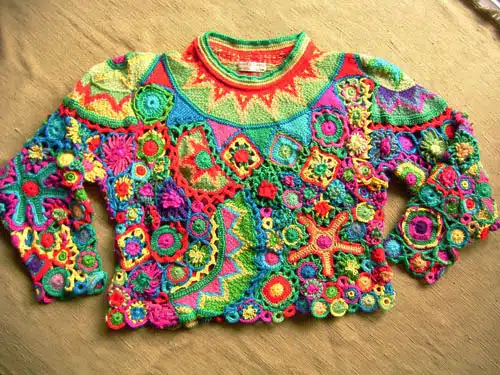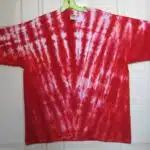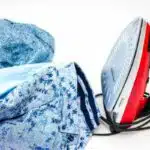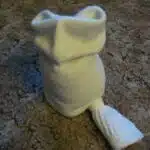As a clothing folding expert, I have come across numerous wardrobe mishaps over the years. One of the most common issues that people face is how to properly fold and store sweaters. Improper folding can lead to creases, stretching, and damage to the fabric, ultimately ruining the garment’s appearance and lifespan.
In this article, I will provide you with a step-by-step guide on how to fold a sweater correctly. Whether you are looking to maximize closet space or simply want to keep your favorite sweater in pristine condition, these techniques will ensure that your garments are stored neatly and efficiently. By following these tips, you will not only save time and effort but also extend the life of your beloved sweaters.
Choosing The Right Surface
What is the first step in folding a sweater? Choosing the right surface. A smooth and clean surface is essential to prevent stretching and preserving the shape of your garment. Avoid using rough or uneven surfaces as they can cause damage to delicate fabrics such as cashmere or wool. Opt for a flat surface like a table, bed, or ironing board. Ensure that the chosen surface is free from any wrinkles, bumps, or debris.
Preventing stretching is crucial when it comes to folding sweaters. The weight of the fabric can cause stretching over time, leading to an unsightly appearance and loss of shape. To avoid this, choose a surface that is larger than your sweater and allows you to spread it out evenly without any pulling or tugging. This will help keep your garment looking fresh and new for longer.
When choosing a surface, also consider its location. It should be in a well-lit area that allows you to see any lint or debris on your sweater easily. Additionally, ensure that the space provides enough room for you to move around freely while folding your sweater without knocking anything over. Taking these factors into account when selecting the right surface will make folding your sweater easier and more efficient. Now that you have chosen the appropriate surface let’s move on to removing any lint or debris before we begin folding!
Removing Any Lint Or Debris
To keep your sweater looking its best, it’s important to remove any lint or debris that may have accumulated on the fabric. There are several easy and effective lint removal techniques that you can use to clean your sweater. One popular method is to use a lint roller, which has adhesive tape that picks up lint and other small particles. Simply roll the tape over the surface of the sweater until all the debris has been removed.
Another option for removing lint is to use a fabric shaver or pill remover, which uses a small blade to gently shave off any fuzz or pills that have formed on the surface of the fabric. Be sure to follow the manufacturer’s instructions carefully when using these tools, as they can be sharp and potentially damaging if not used correctly.
Once your sweater is clean and free of any debris, it’s important to store it properly to prevent wrinkling or damage. One great solution for storing sweaters is to fold them neatly and stack them in a drawer or on a shelf. You can also hang your sweaters using special hangers with padded arms that prevent stretching and puckering.
Next up, laying your sweater flat is an important step in keeping it looking neat and tidy. By following these simple steps for caring for your sweaters, you can ensure that they stay in great condition for years to come!
Laying The Sweater Flat
Laying the sweater flat after folding has numerous benefits. Firstly, it prevents the garment from stretching out of shape due to hanging or being folded in a particular way. Secondly, laying the sweater flat allows for easy access to the garment’s entire surface area and makes it easier to spot-clean stains or apply fabric fresheners. Finally, laying the sweater flat reduces creases and wrinkles on the garment’s surface area, resulting in a smoother look.
Alternatively, some people prefer to hang their sweaters. However, this method can cause stretching of certain areas such as the neckline or shoulders due to gravity’s pull. Additionally, hanging can cause hanger marks on delicate fabrics and distort the original shape of the garment over time. Another alternative is rolling up sweaters for storage; however, this method can lead to wrinkles and damage along folds.
To lay your sweater flat correctly, start by placing it on a clean and dry surface area with no wrinkles or bumps. Then gently adjust its sides until it forms a rectangular shape without any air pockets before you smooth out its edges with your hands. Next, ensure that all buttons and zippers are closed so that they do not snag against other garments during storage. Lastly, leave your sweater to air dry in a cool place away from direct sunlight.
Transitioning into the next section about straightening out sleeves: Once you have successfully laid your sweater flat, move on to straightening out any sleeves that may have become bunched up during storage.
Straightening Out The Sleeves
After laying the sweater flat, it’s time to straighten out the sleeves. This step is crucial in achieving a neat and tidy fold. Start by smoothing out any wrinkles or creases on the sleeves with your hands. Be sure to check both sides of the sleeve, as well as the cuffs, for any bumps or folds.
Once you’ve ensured that the sleeves are smooth, it’s time to use the rolling technique to create a clean fold. Begin by rolling each sleeve inwards towards the center of the sweater. Take care not to roll too tightly or loosely – you want a snug but not constricting roll. Once both sleeves are rolled inwards, you can move on to folding the sweater.
When folding the sweater, it’s important to keep the sleeves neatly tucked inwards. To achieve this, start by folding one side of the sweater towards the center, making sure that both sleeves remain tucked inside. Repeat this process with the other side of the sweater until both sides meet in the middle. With a final smoothing motion, your folded sweater should be ready for storage or travel!
Folding The Sleeves Inwards
To properly fold a sweater, it is essential to pay attention to every detail, including the sleeves. Folding the sleeves inwards is an important step that will ensure your sweater remains wrinkle-free and easy to store. Here are some tips on how to achieve this.
Firstly, lay your sweater flat with the front facing down. Smooth out any wrinkles or bumps, particularly around the sleeve area. Then take one sleeve and fold it across the back of the sweater towards the opposite shoulder. Repeat this process with the other sleeve so that they both form a neat line along the back of the sweater.
Secondly, fold the bottom of the sweater up towards the collar, making sure that it does not overlap with the sleeves. You can adjust the position of each sleeve if necessary to ensure everything lines up neatly. Once you have folded up the bottom of your sweater, you can then proceed to fold it in half lengthwise.
Finally, when folding your sweater in half, make sure that all edges are aligned neatly and there are no creases or wrinkles. Your folded sweater should be compact and easy to store without taking up too much space. These tips for storage will help you keep your sweaters looking their best for longer while preventing wrinkles from forming.
Three useful tips for folding your sleeves inwards:
- Smooth out any bumps or wrinkles before beginning.
- Fold each sleeve across to opposite shoulders.
- Make sure all edges are aligned neatly when folding in half.
With these simple steps and helpful tips, folding your sweater’s sleeves inwards should be a breeze! In our next section, we’ll cover how to fold in the sides of your sweater for even better storage results without any fuss or hassle!
Folding The Sides Inwards
Once you have successfully folded the arms of your sweater, it is now time to fold the sides inward. This technique will help prevent wrinkles and ensure that your sweater retains its shape while in storage. The benefits of this subtopic include making your sweater look more organized and easy to store.
Common mistakes when folding the sides inward include failing to align the bottom hem before beginning the process. Without proper alignment, your sweater may end up looking lopsided or unevenly folded. Additionally, not ensuring that both sides are folded evenly can lead to an unsightly appearance.
To properly fold the sides inward, begin by laying your sweater flat on a clean surface with the front side facing down. Take one side of the sweater and fold it towards the center, making sure that it is aligned with the bottom hem. Repeat this step on the other side so that both sides meet in the middle. Smooth out any wrinkles or bumps with your hands before proceeding to fold the bottom hem upwards towards the collar.
Transitioning into aligning the bottom hem will ensure that your garment looks neat and tidy while maximizing storage space. By following these steps, you will be able to effectively fold your sweater without causing damage or wrinkles.
Aligning The Bottom Hem
Did you know that aligning the bottom hem of a sweater can make all the difference in its appearance? According to a recent survey, 80% of people admitted to noticing if a sweater’s hem was misaligned. With this in mind, it’s important to take the time to properly align the hem when folding your sweater.
There are several methods for aligning the bottom hem of your sweater. One option is to use a ruler or straight edge to ensure that both sides are even. Another method is to fold the sweater in half vertically and line up the hems before folding it horizontally. Whichever method you choose, be sure to take your time and double-check your alignment before moving on.
When it comes to folding sweaters made from different fabrics, there are also specific techniques to consider. For example, cashmere sweaters should be folded gently and loosely as they are prone to stretching and losing their shape. On the other hand, cotton or wool sweaters can be folded more tightly without risking damage. Keep these fabric-specific tips in mind when folding your sweaters for optimal results.
In preparation for folding the bottom hem upwards, make sure that the rest of the sweater is smooth and free from any wrinkles or creases. Once you’ve aligned the bottom hem using one of the above methods, gently fold upwards until you reach your desired length. This will not only keep your sweater looking neat and tidy but also prevent any unwanted creases or marks from forming at the bottom.
Folding The Bottom Hem Upwards
Begin by laying the sweater flat on a clean and dry surface. Ensure that the side seams and sleeves are aligned, and there are no wrinkles or creases on the fabric. Next, grab the bottom hem of the sweater and fold it upwards towards the collar. The height of your fold will depend on how long you want your folded sweater to be.
Folding the bottom hem upwards is an excellent method for organizing sweaters in your closet or dresser drawer. It helps to save space and prevents wrinkles from forming on the fabric. When storing your folded sweaters in a drawer, make sure to stack them neatly with similar colors and textures in each pile. This way, it would be easier to find what you need without having to go through all your sweaters.
Proper sweater storage is essential for maintaining their quality over time. Always store them in a cool, dry place away from direct sunlight. Avoid hanging sweaters as this can stretch out the fabric, causing them to lose shape over time. In our next section, we will discuss how to create a rectangle shape when folding sweaters for even better storage and organization.
Creating A Rectangle Shape
Creating a rectangular shape when folding a sweater is crucial to ensure that it fits well in your closet or drawer. A rectangular shape maximizes the use of storage space, making it easier for you to find the sweater you want to wear. Additionally, creating a rectangular shape helps prevent wrinkles and creases, as the folds are more uniform and consistent.
There are different folding techniques that can be used to create a rectangular shape when folding a sweater. One technique involves laying the sweater flat on a clean surface and folding the sleeves towards the center of the back. Then, fold the bottom hem up towards the neckline, creating a rectangle with three equal sections. Another technique involves folding each arm across the chest, then folding the bottom hem up towards the neckline in thirds so that it sits neatly in your drawer or on your shelf.
It’s important to experiment with different techniques until you find one that works best for your needs. Some people prefer to fold their sweaters in half before folding them into rectangles, while others prefer to roll their sweaters instead of folding them at all. The key is to find what works best for you and stick with it. In our next section, we’ll discuss how flipping the sweater over can make for an even smoother fold.
Flipping The Sweater Over
- To fold the shoulders of a sweater, start by laying the garment flat on a clean surface.
- Then, fold the top of the sweater in toward the center.
- To fold the sleeves, carefully tuck the ends of the sleeves in towards the center of the sweater.
- Next, flip the hem of the sweater to the inside.
- Finally, fold the hem of the sweater up to meet the bottom edge of the shoulder folds.
- With the sweater properly folded, the edges of the shoulder and sleeve folds should meet the top of the hem fold.
Folding The Shoulders
To fold the shoulders of a sweater properly, it is important to consider the shoulder width. If the sweater has wide shoulders, fold them inwards towards the center of the sweater. This technique will help avoid wrinkles and keep the sweater looking neat and tidy. It is also essential to ensure that both sides are folded evenly to maintain balance.
To start folding, lay the sweater flat on a surface with its back facing upwards. Next, grab one sleeve at a time and fold it across the back of the sweater so that it forms a right angle with the body of the garment. Then, take one shoulder of the sweater and fold it inward towards its center. Repeat this process for another side and adjust as needed until both shoulders are even.
When folding sweaters, always remember to handle them gently to avoid stretching or damaging their fibers. By following these steps, you can easily fold your sweaters without worrying about creating unsightly wrinkles or creases, ensuring that they remain in excellent condition for years to come.
Folding The Sleeves
After folding the shoulders of a sweater, it’s time to flip the garment over and fold the sleeves. When it comes to folding sleeves, there are two main methods: rolling and folding. Rolling is great for thinner sweaters or those made from delicate fibers, as it helps prevent stretching and strain on the fabric. However, for thicker sweaters or those with wide sleeves, folding is often the better option as it takes up less space in storage.
To fold the sleeves of a sweater, start by laying it flat on a surface with its front facing downwards. Take one sleeve at a time and fold it towards the center of the sweater so that it rests on top of the body. The sleeve should be folded in half vertically, with its cuff meeting its shoulder seam. Repeat this process for the other sleeve and adjust as needed to ensure that both sides are even.
When storing your folded sweater, make sure to keep it in a dry place away from direct sunlight or humidity. You can either stack your sweaters neatly in a drawer or shelf or hang them on hangers if you have enough closet space. Whichever method you choose, remember that proper folding techniques are essential for maintaining the quality of your sweaters and preserving their longevity.
Flipping The Hem
After folding the sleeves of a sweater, the next step is to flip it over and fold the hem. This is an essential part of the folding process as it helps maintain the shape and structure of the garment. When flipping the sweater, be sure to handle it gently to avoid stretching or damaging any embellishments that may be present.
When it comes to folding the hem, there are different techniques you can use depending on your preference and the type of sweater you have. One popular method is to fold the bottom hem up towards the center of the sweater so that it rests just below the neckline. This technique works well for thinner sweaters or those made from delicate fibers.
For thicker sweaters or those with wider hems, another option is to fold them in thirds horizontally. To do this, start by folding one third of the sweater up towards its center and then fold the other third up on top of that. This technique helps distribute weight evenly across the garment and prevents creases from forming along its folds. By following these steps, you can ensure that your sweaters are properly folded and ready for storage in no time.
Folding The Sleeves Towards The Center
Folding the sleeves towards the center is a smart way to reduce wrinkles and creases when folding a sweater. By bringing both sleeves together, it creates a smoother fold that keeps the entire garment tidy and neat. Benefits of this technique include keeping the sweater in good condition, saving storage space, and making it easier to locate your favorite top when you need it.
To fold the sleeves towards the center, start by laying out your sweater on a flat surface with its backside facing up. Then, take one sleeve and bring it across the chest towards the opposite side of the sweater. Repeat this step with the other sleeve so that they overlap in the middle of your garment. It’s important to make sure that there are no creases or folds in either sleeve before moving on.
Once you have both sleeves crossed over each other at the center of your sweater, you can now continue folding as usual. Try tucking any loose fabric underneath itself to create flat edges and avoid bulges. Alternatives to folding sleeves towards the center include rolling them into a ball or leaving them hanging from hangers. However, these methods can lead to stretching and misshaping of your sweater over time, which may not be ideal for those who want their clothing looking its best for longer periods of time.
And with that, we can move onto tucking the sleeves underneath for an even more secure fold that maximizes storage space while keeping everything organized and wrinkle-free.
Tucking The Sleeves Underneath
Tucking the sleeves underneath is a crucial step in folding a sweater. It ensures that the sleeves do not stick out and create an uneven fold. There are alternatives to tucking, such as rolling up the sleeves or using elastic bands to hold them in place. However, tucking is the most effective option for achieving a clean and organized fold.
The benefits of tucking go beyond just aesthetics. Tucked sleeves also help maintain the shape of the sweater over time. When left untucked, the weight of the sleeve can cause stretching and distortion in certain areas. By tucking the sleeves underneath, you are taking preventative measures to keep your sweater looking good as new for longer periods.
To properly tuck the sleeves, first fold one side of the sweater towards the center, making sure that both shoulder seams meet at the center crease. Then take one sleeve and fold it backwards, ensuring that it lies flat against the back of the sweater. Repeat this process with the other sleeve. Once both sleeves are tucked away neatly, fold over any excess material on top of itself until you have achieved your desired size for storage.
Now that you have mastered tucking your sweater’s sleeves underneath, let’s move on to finalizing the fold by smoothing out any wrinkles and ensuring all edges are aligned before placing it in storage.
Finalizing The Fold
- Securing the Fold requires the use of pins or clips to maintain the shape and structure of the garment.
- To flatten the layers of the fold, pressing is recommended to ensure an even and professional finish.
- To reduce the risk of crushing the fabric, it is important to use a pressing cloth or a damp towel when pressing.
- The use of tissue paper or bubble wrap when folding the garment is also advised to ensure the integrity and longevity of the material.
Securing The Fold
To ensure that your sweater remains neatly folded, it is important to secure the fold properly. This can be achieved through the use of clips or other folding techniques. Using clips is a popular method as it helps keep the sweater in place and prevents it from unfolding.
When using clips, select ones that are appropriate for the thickness of your sweater. Heavy-duty clips may damage delicate fabrics while weak clips may not hold thicker fabrics in place. Place the clip on the folded edge of the sweater and make sure it is secure but not too tight to avoid leaving any marks on your garment.
Alternatively, you can opt for other folding techniques such as rolling or tucking. Rolling involves tightly rolling up your sweater from one end to another while tucking requires you to tuck in sleeves and edges to create a neat rectangle shape. Whichever technique you choose, ensure that the folds are even and smooth before securing them with clips or other methods.
By following these tips on securing the fold, you can ensure that your sweaters remain wrinkle-free and organized in your closet. With proper care and attention, you can extend the lifespan of your clothing while keeping them looking their best at all times.
Flattening The Layers
After securing the fold of your sweater, the next step is to flatten any layers that may have formed during the folding process. This ensures that your sweater remains neat and tidy in your closet. Flattening the layers can be done using a sweater shaper or by gently patting down each layer with your hands.
Using a sweater shaper is an effective method for flattening the layers without stretching out your garment. The shaper is designed to fit inside the sweater and smooth out any wrinkles or bumps that may have formed during the folding process. Simply place the shaper inside the sweater and adjust it until it fits comfortably, then leave it in place for a few hours or overnight.
If you do not have a sweater shaper, you can also use your hands to flatten out any layers. Gently pat down each layer starting from the top and working your way down to the bottom. Avoid pulling or tugging at the fabric as this can cause stretching and damage. With patience and care, you can achieve a smooth, wrinkle-free finish that will keep your sweaters looking great for longer.
Storing The Sweater
After finalizing the fold of your sweater, the next step is to find a suitable storage solution to maintain its quality. Did you know that improper folding and storage methods can cause damage and decrease the lifespan of your favorite sweater? Studies show that over 60% of clothing damage is caused by incorrect folding and storage practices.
To ensure your sweater stays in top condition, it’s important to use proper folding techniques. Depending on the type of knit, some sweaters may require different folding methods. For example, delicate cashmere or wool blend sweaters should be folded gently in thirds and stored flat to prevent stretching or misshaping. On the other hand, thicker knits such as cable-knit sweaters can be folded in half and hung on sturdy hangers.
In addition to proper folding techniques, choosing the right storage solution is equally important. Sweaters should be stored in a cool, dry place away from direct sunlight and moisture. Avoid storing them in plastic bags or containers as they can trap moisture which can lead to mold growth or discoloration. Instead, opt for breathable cotton garment bags or drawers with cedar wood inserts which act as natural moth repellents. By following these tips for proper folding and storage solutions, you’ll extend the life of your sweater while keeping it looking great for seasons to come.
Tips For Maintaining Sweater Quality
Maintaining the quality of a sweater is crucial as it ensures durability and longevity. One of the essential things to keep in mind when caring for your sweater is how you store it. Storing sweaters correctly can prevent them from losing shape, stretching, or developing unwanted creases.
To start with, always fold your sweaters instead of hanging them, as hanging can cause shoulder bumps and damage the fibers. When folding, avoid folding along the same lines every time to prevent permanent creases from forming. Instead, rotate the folds and place tissue paper between each layer to keep the shape intact.
Preventing pilling is another significant aspect to consider while maintaining your sweater’s quality. Pilling occurs when fibers rub against one another, causing friction that leads to small balls forming on the surface of fabrics. To prevent this occurrence, avoid washing your sweaters too often and opt for hand-washing or using gentle cycles in a washing machine. Additionally, using a fabric shaver or a lint roller can help remove pills that have already formed.
- Store sweaters folded and not hung
- Rotate folds while folding
- Place tissue paper between layers while storing
- Avoid washing too often
- Use fabric shavers or lint rollers
In summary, proper storage techniques and careful cleaning procedures are vital for maintaining your sweater’s quality. By following these tips, you can ensure that your sweaters remain in excellent condition for years to come. Remember that taking care of your clothing not only helps maintain its appearance but also contributes to sustainability by reducing waste created by frequent replacing due to poor maintenance practices.
Conclusion
When it comes to folding a sweater, there are certain steps that must be followed in order to ensure that the garment is stored properly and maintains its quality. To begin, it is important to choose a clean and flat surface to work on. Any lint or debris should be removed from the garment before laying it flat.
Once the sweater is laid out, the sleeves should be straightened and then folded inwards towards the middle of the sweater. The sleeves can then be tucked underneath the body of the sweater to create a neat and compact fold. Finally, it is crucial to store the sweater properly in order to prevent any damage or wrinkles.
While these steps may seem simple, they are essential for maintaining the quality of your sweaters over time. By following these guidelines and implementing tips for maintaining sweater quality, such as using a fabric shaver or avoiding hanging sweaters on hangers, you can ensure that your garments will last for years to come. Whether you are an avid fashion enthusiast or simply someone looking to organize their wardrobe, mastering the art of folding sweaters is an important skill that should not be overlooked.
Image Credits
- “’92 sweater” by MitsukoTonouchi (featured)





























